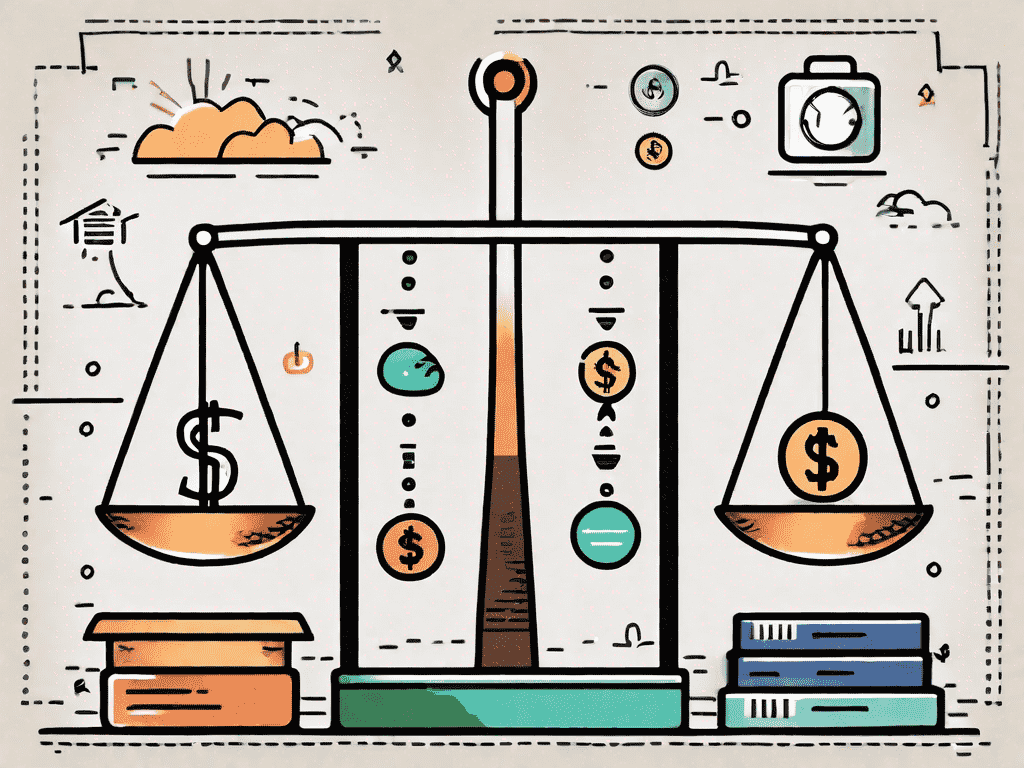
Total Reward: A Holistic Approach to Employee Compensation and Benefits
In today’s competitive job market, companies are constantly searching for ways to attract and retain top talent. One approach that has gained significant attention in recent years is the concept of total reward. This holistic approach to employee compensation and benefits recognizes that financial rewards alone are not enough to satisfy the diverse needs and motivations of employees. Instead, total reward encompasses a wide range of elements that contribute to an employee’s overall experience and satisfaction in the workplace.
Understanding the Concept of Total Reward
At its core, total reward refers to the combination of all the different types of rewards and benefits that employees receive in exchange for their work. It takes into account both monetary and non-monetary elements, recognizing that employees value more than just their paycheck. By adopting a total reward approach, organizations aim to create a comprehensive reward system for employees that appeals to their unique needs and motivates them to perform at their best.
When we think about total reward, it’s important to understand that it goes beyond just the financial aspect. While a competitive salary is undoubtedly a crucial component, organizations also need to consider the non-cash rewards that can enhance employee satisfaction and engagement. These non-monetary rewards can include flexible work arrangements, opportunities for growth and development, recognition and appreciation, and a positive work environment.
The Components of Total Reward
There are several key components that make up a total reward package. These can include base salary, performance-based incentives, employee benefits, work-life balance programs, career development opportunities, and recognition and appreciation efforts. By considering each of these elements in a holistic manner, organizations can design a reward strategy that reflects their values and supports their employees’ well-being.
Let’s dive deeper into each of these components:
- Base Salary: This is the fixed amount of money that employees receive for their work. It serves as the foundation of the total reward package and is typically determined based on factors such as job responsibilities, market rates, and the employee’s skills and experience.
- Performance-Based Incentives: In addition to the base salary, organizations may offer performance-based incentives to reward employees for achieving specific goals or targets. These incentives can come in the form of bonuses, commissions, profit-sharing, or stock options, and they provide employees with an opportunity to earn additional income based on their performance.
- Employee Benefits: Employee benefits encompass a wide range of offerings, including health insurance, retirement plans, paid time off, and other perks like gym memberships or employee discounts. These benefits are designed to support employees’ physical and financial well-being, providing them with a sense of security and stability.
- Work-Life Balance Programs: Organizations that prioritize work-life balance often provide programs and initiatives to help employees manage their personal and professional lives effectively. These can include flexible work arrangements, telecommuting options, parental leave policies, and wellness programs. By promoting work-life balance, organizations recognize the importance of employees’ personal lives and aim to create an environment where they can thrive both inside and outside of work.
- Career Development Opportunities: Investing in employees’ professional growth and development is a crucial component of total reward. Organizations that offer opportunities for learning, training, and advancement demonstrate their commitment to their employees’ long-term success. These opportunities can include mentorship programs, tuition reimbursement, skill-building workshops, and career progression pathways.
- Recognition and Appreciation Efforts: Recognizing and appreciating employees’ contributions is essential for fostering a positive work culture. Organizations can implement various initiatives to acknowledge employees’ achievements, such as employee of the month programs, peer recognition platforms, or regular performance reviews that highlight accomplishments and provide constructive feedback.
The Importance of a Holistic Approach
One of the primary reasons why a holistic approach to employee compensation and benefits is gaining traction is because it acknowledges that employees have diverse needs and aspirations. While financial rewards are undoubtedly important, they are just one piece of the puzzle. By considering other aspects, such as career advancement opportunities and a positive work environment, organizations can create an integrated approach that addresses employees’ overall well-being.
Organizations that adopt a holistic approach to total reward are more likely to attract and retain top talent. Employees are increasingly looking for workplaces that offer more than just a paycheck. They want to work for organizations that value their contributions, provide opportunities for growth, and prioritize their well-being. By designing a total reward package that caters to these needs, organizations can create a competitive advantage in the talent market and foster a culture of engagement and loyalty.
The Role of Compensation in Total Reward
Compensation plays a significant role in the total reward equation. It encompasses the pay and benefits that employees receive for their work and is a crucial factor in attracting and retaining talent.
When it comes to compensation, organizations understand the importance of offering competitive packages to their employees. A well-designed compensation system not only motivates employees to perform at their best but also serves as a reflection of the value the organization places on their contributions.
In today’s competitive job market, attracting and retaining top talent is a priority for organizations. A comprehensive compensation package that includes a mix of monetary and non-monetary rewards can make a significant difference in attracting the best candidates. It is not just about the base salary; it is about the overall value proposition that organizations offer to their employees.
Types of Employee Compensation
Employee compensation can take various forms, including base salary, bonuses, commissions, profit-sharing, and stock options. Each element serves to incentivize and reward employees based on their individual and collective contributions to the organization’s success.
Base salary forms the foundation of an employee’s compensation package. It is the fixed amount that employees receive on a regular basis, typically in the form of monthly or annual payments. Base salary is often determined by factors such as job responsibilities, experience, and market rates.
Bonuses are additional payments that employees receive based on their performance or the achievement of specific targets. They can serve as a powerful motivator, encouraging employees to go above and beyond in their work.
Commissions are commonly used in sales-driven organizations. They provide employees with a percentage of the sales revenue they generate, incentivizing them to drive business growth and meet sales targets.
Profit-sharing is a form of compensation where employees receive a share of the company’s profits. This can create a sense of ownership and alignment with the organization’s goals, as employees directly benefit from the company’s success.
Stock options are another form of compensation that gives employees the opportunity to purchase company stock at a predetermined price. This not only provides a financial incentive but also aligns the interests of employees with the long-term success of the organization.
Balancing Equity and Efficiency in Compensation
When designing a compensation system, organizations must strike a balance between equity and efficiency. Equity ensures that employees are fairly compensated for their skills, experience, and performance, while efficiency ensures that the compensation system aligns with the organization’s financial resources and objectives.
Equity in compensation means that employees are paid fairly in relation to their contributions and the value they bring to the organization. It involves evaluating factors such as job responsibilities, experience, and performance to determine appropriate compensation levels. Organizations strive to create a compensation structure that rewards employees based on merit and ensures equal pay for equal work.
Efficiency in compensation focuses on optimizing the allocation of resources to ensure that the compensation system is sustainable and supports the organization’s financial goals. This involves considering factors such as budget constraints, market conditions, and the organization’s overall compensation philosophy. By finding the right balance between equity and efficiency, organizations can create a compensation system that is both fair and effective.
Furthermore, organizations need to regularly review and adjust their compensation systems to remain competitive in the market and retain top talent. This includes conducting salary benchmarking studies, analyzing industry trends, and considering the overall economic landscape. By staying proactive and responsive to changes, organizations can ensure that their compensation systems continue to attract, motivate, and retain high-performing employees.
The Significance of Benefits in Total Reward
In addition to compensation, employee benefits play a crucial role in the total reward approach. Benefits provide employees with essential protections and opportunities that enhance their overall well-being and job satisfaction.
Common Types of Employee Benefits
Employee benefits can include healthcare coverage, retirement plans, paid time off, flexible work arrangements, and educational assistance programs. These benefits not only support employees’ physical and financial health but also demonstrate the organization’s commitment to their overall well-being.
Tailoring Benefits to Employee Needs
To maximize the impact of employee benefits, organizations must ensure they align with employees’ unique needs and preferences. This requires understanding the demographics and circumstances of the workforce and offering benefits that meet their specific requirements.
Implementing a Total Reward Strategy
Developing and implementing a total reward strategy requires a thoughtful and systematic approach. It involves assessing the current state, defining the desired future state, and developing a roadmap to bridge the gap between the two.
Steps to Develop a Total Reward Strategy
The process of developing a total reward strategy typically involves conducting a thorough analysis of the organization’s business objectives, employee demographics, and competitive landscape. This analysis serves as the foundation for identifying the key elements that will make up the total reward package.
Overcoming Challenges in Implementation
Implementing a total reward strategy can present challenges, such as budget constraints, resistance to change, and ensuring effective communication. Organizations must anticipate these challenges and develop strategies to address them, ensuring a smooth and successful implementation process.
Evaluating the Effectiveness of a Total Reward Approach
Continuous evaluation and improvement are critical to ensuring the long-term success of a total reward approach. Organizations must establish key performance indicators (KPIs) to measure the impact of their total reward strategy and make data-driven decisions to enhance its effectiveness.
Key Performance Indicators for Total Reward
Some common KPIs for evaluating the effectiveness of a total reward approach include employee turnover rate, engagement levels, productivity metrics, and employee satisfaction surveys. These indicators provide valuable insights into the impact of the total reward strategy on employees’ overall experience and performance.
Continuous Improvement in Total Reward Strategy
The world of work is constantly evolving, and organizations must adapt their total reward strategy to meet changing employee needs and market dynamics. By regularly reviewing and fine-tuning their approach, organizations can ensure that their total reward strategy remains relevant and impactful.
By taking a holistic approach to employee compensation and benefits, organizations can create a more engaging and rewarding work environment. By recognizing the diverse needs and motivations of employees and tailoring the total reward package accordingly, organizations can attract and retain top talent and drive performance and satisfaction to new heights.


